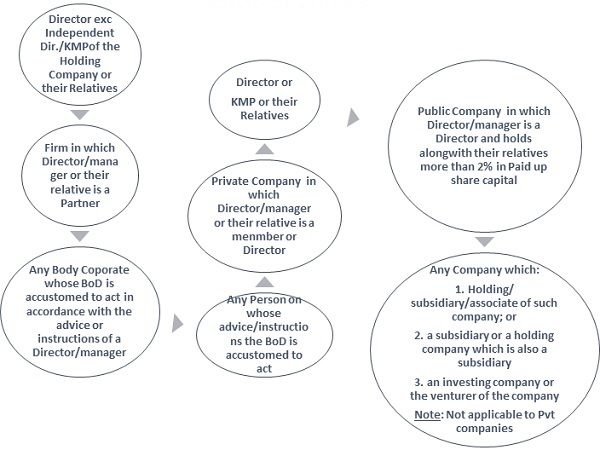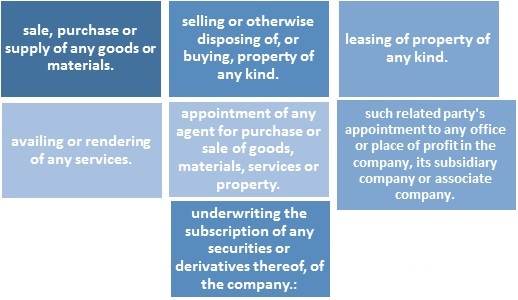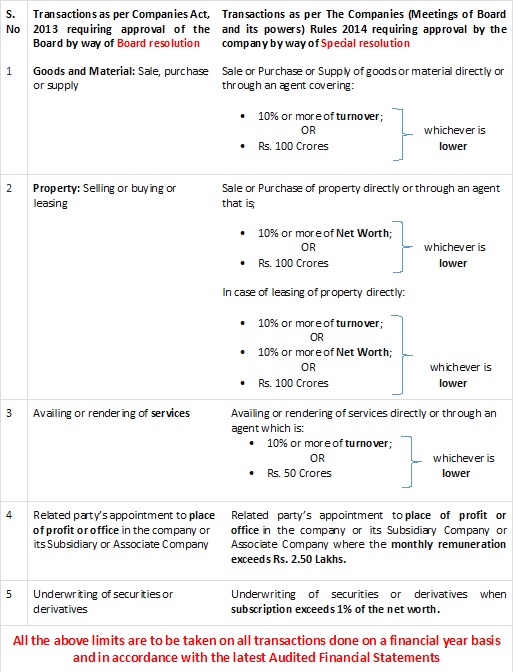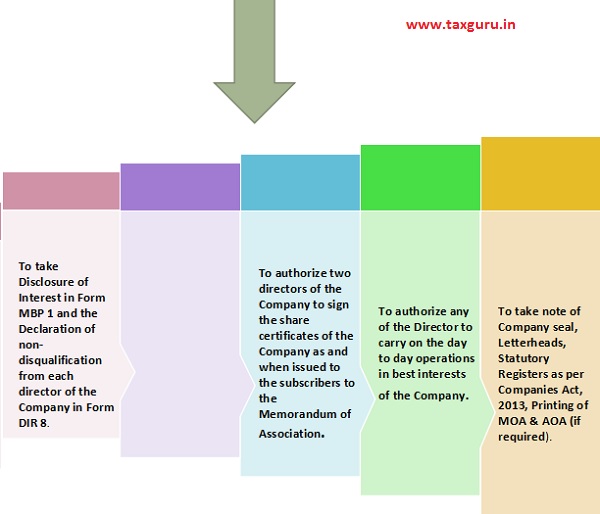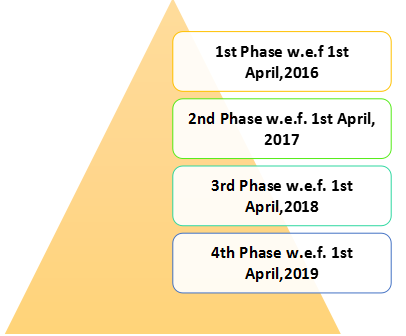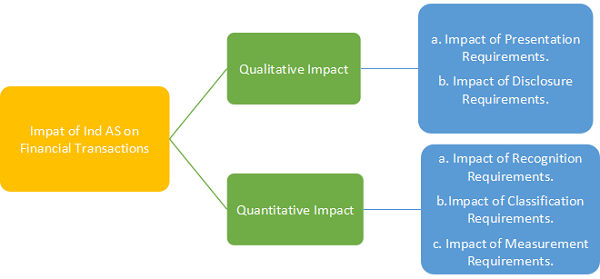
What is GST Audit?Audit is examination of records, returns and other documents maintained or furnished by the registered person under GST Law or any other law. The examination is to verify the correctness of:
- Turnover declared;
- Taxes paid;
- Refund claimed; and
- Input tax credit availed;
And to assess his compliance with the provisions of this act or the rules made there under.
Who is required to get his accounts audited?Every registered person whose aggregate turnover during a financial year exceeds two crore rupees shall get his accounts audited as specified under sub-section (5) of Section 35 and he shall furnish a copy of the audited annual accounts and a reconciliation statement, duly certified, in GSTR 9C, electronically through the common portal.
Who is authorised to do the GST Audit?Every registered person whose turnover in a financial year exceeds two crore rupees has to get his accounts audited by either a Chartered Accountant or a Cost Accountant.
What is the due date of filling Form GSTR-9C?The registered person is required to submit electronically a copy of the:
- audited annual accounts(of the legal entity);
- annual return in the prescribed form GSTR 9 (of the registered person);
- reconciliation statement, duly certified, reconciling the value of supplies declared in the return furnished for the financial year along with the audited financial statement in GSTR 9C (refer Appendix for GSTR 9C); and
- such other particulars as prescribed;
- On or before the 31st day of December following the end of the financial year.
However as per the latest notification from
GST Council, all registered person are required to file Form GSTR-9C by 31st August, 2019.
CLARIFICATIONS/ QUERIES RELATED TO FORM GSTR-9C
1. What are the pre-conditions for filing Form GSTR 9C?
- User should be registered and should have a valid GSTIN.
- User has filed Form GSTR-9 for the relevant financial year.
- The aggregate turnover of such registered person during the financial year exceeds two crore rupees.
- He should have got his accounts audited as prescribed.
2. What is the role of Chartered Accountant or a Cost Accountant in certifying reconciliation statement? There are apprehensions that the chartered accountant or cost accountant may go beyond the books of account in their recommendations under FORM GSTR-9C. The GST Act is clearing this regard. With respect to the reconciliation statement, their role is limited to reconciling the values declared in annual return (FORM GSTR-9) with the audited annual accounts of the taxpayer
3. What do you mean by Aggregate Turnover under GST Act?Aggregate turnover means the aggregate value of all taxable supplies (excluding the value of inward supplies on which tax is payable by a person on reverse charge basis), exempt supplies, exports of goods or services or both and inter-State supplies of persons having the same
Permanent Account Number, to be computed on all India basis but excludes central tax, State tax, Union territory tax, integrated tax and cess.
4. Does stock transfer made between two branches having different GSTIN will be included in the Aggregate Turnover?Yes, the definition of Aggregate Turnover clearly mentions that supplies made between two distinct person having the same Permanent Account Number will be included in the aggregate turnover. Thus stock transfer provided from a branch located in one state to a branch located in another state will be included in the aggregate turnover of the branch supplying the goods or services.
5. Whether Non-GST supplies will be included in the turnover or not?Non-GST supplies includes supply of alcoholic liquor for human consumption, motor spirit (commonly known as petrol), high speed diesel, aviation turbine fuel petroleum crude and natural gas and transactions specified in Schedule III of the CGST Act.
All above are part of the exempt supplies and the definition of aggregate turnover includes exempt supplies.
6. Whether supplies made between the period April 2017 to June 2017 will be include in the turnover to determine the eligibility for filling of reconciliation statement i.e., Form GSTR-9C?As per the latest Clarification regarding Annual Returns and Reconciliation Statement, dated 03/07/2019 from the Govt., the aggregate turnover for this purpose shall be reckoned for the period July, 2017 to March, 2018.
7. To determine the limit of aggregate turnover of Rs.2 Crore, GSTIN wise turnover has to be checked?It may be noted that the aggregate turnover i.e. the turnover of all the registrations having the same Permanent Account Number is to be used for determining the requirement of filing of reconciliation statement. Therefore, if there are two registrations in two different States on the same PAN, say State A (with turnover of Rs. 1.2 Crore) and State B (with turnover of Rs. 1 Crore) they are both required to file reconciliation statements individually for their registrations since their aggregate turnover is greater than Rs.2 Crore.
8. How does turnover of each GSTIN must be derived?Since the information has to be in the context of each registrant, the Registered Person and the Auditor must be equipped to file the said Form separately for every registration. The Registered Person must be able to carve out a trial balance for every State/UT (viz. every registration) from the consolidated trial balance of the entity for which the financial statements are prepared and audited. If this is not possible, then the Registered Person must derive the transactions of every registration from the single trial balance for the entity which was the subject matter of audit.
9. What other points has to be kept in mind while considering the Turnover from the audited financial statements?While considering the turnover from the audited financial statements, the Auditor is also Required to include indirect income in the form of dividend, interest, for ex fluctuation, profit on sale of assets, etc. if such income are attributable (based on underlying documents and contracts to relate to the said registered person). Any amount of return supplies credited to purchase or expenditure account would not be considered for the purpose of arriving at the turnover under Sl. No. 5A. Such adjustment has been dealt with under appropriate Sl. No. in this Part.
To ensure completeness and correctness of the details of turnover to be declared, the following checks could be used:
a. turnover in State/UT (in case of single registration) must reconcile to the turnover disclosed in the audited financial statements;
b. turnover in State/UT (in case of multiple registration) must reconcile to the turnover as recorded in the books of accounts of each registration;
c. Master reconciliation to ensure that the details of turnover declared for different registrations (in case of multiple registrations either due to presence in multiple States/UTs’ or due to unit(s) in SEZ) with the total turnover of the entity.
10. What details are to be provided in Sl. No. 5B (Unbilled revenue at the beginning of financial year)?Unbilled revenue which was recorded in the books of accounts on the basis of accrual system of accounting in the last financial year and was carried forward to the current financial year shall be declared in Sl. No. 5B. In other words, when GST is payable during the financial year on such revenue (which was recognized earlier), the value of such revenue shall be declared here.
(
For example, if rupees Ten Crores of unbilled revenue existed for the financial year 2016-17, and during the current financial year, GST was paid on rupees Four Crores of such revenue, then value of rupees Four Crores rupees shall be declared here).
11. What are the adjustments to be included/ excluded from Sl. No.5C of FORM GSTR-9C?Advances received can be for various purposes. Therefore, the advances on which GST is liable should only be considered for the adjustment. The illustrations of advances to be included/ excluded are as follows:
Include for Adjustment
A. Advance received in respect of services for which the supply has not been made as on 31st March 2018
Revenue not recognized in books, but offered to tax for GST
B. Advance received for Goods before 15th Nov 2017 and the supply of goods not complete as on 31st March 2018
Revenue not recognized in books, but offered to tax for GST
Exclude for Adjustment (GST is not applicable)A. Advance received for EXEMPTED services as on 31St March 2018
B. Advance received for Goods after 15th Nov 2017
C. Deposits or Loans received
12. How to calculate tax on the Advances Received?One has calculated tax on advance and paid tax while filing the return for that month. The advance received (if exclusive of tax) would be considered as cum-tax.
Two important points to note:
(a) Whenever the rate of tax cannot be determined during receipt of advance, GST @ 18% has to be charged.
(b) Whenever the nature of supply cannot be ascertained, the advance is considered as inter-State supply and IGST has to be paid.
13. What is the effect of credit notes issued in relation to exempt supplies, zero-rated supplies and non-GST outward supplies?Supply of exempt, zero-rated and non-GST outward supply of goods and/ or services are not liable to GST. In such a scenario, the credit notes issued for claiming reduction in the taxable value shall be recorded in the audited annual financial statements. Such credit notes should be declared against Part II Sl. No. 5J of FORM GSTR-9C. Where credit notes related to zero-rated supplies are already reported in FORM GSTR-1, in FORM GSTR-9 as well as in books of accounts, such credit notes may not be declared in this Sl. No. 5J.
14. How common cost incurred for all the GSTIN’s will be allocated?This could be done based on the turnover of each distinct person, or based on manpower deployed, or any other suitable cost-driver relevant to each such cost to be allocated. Manpower employed by the legal entity must also be allocated to Belong to specific branch (GSTIN-wise allocation of staff cost)
If the registered person has registered himself as an ISD then it will allocate the common input credit by issuing prescribed document for the purposes of distributing the credit of GST on the said services to another branch of the same legal person.
For Example:
Head office of ABC limited is located at Bangalore having branches at Chennai, Mumbai and Kolkata. The head office incurred annual software maintenance expense (service received) on behalf of all its branches and received the invoice for the same. Since software is used by all its branches, the input tax credit of entire services cannot be claimed at Bangalore. The same has to be distributed to all the three locations. Here, the Head office at Bangalore is the Input Service Distributor.
Another concept is of Cross Charge, where transactions between distinct persons are deemed as supplies even when such transactions do not involve supply.
Accordingly, stock transfer of goods between the branches or services between the branches being a transaction between distinct persons comes within the ambit of GST Laws and will become GST Liability for the head branch and input for the other branch to whom the services has been provided.
For Example:
XYZ Limited has Head office in Maharashtra, following centralized billing and payment mechanism. XYZ Limited has 2 registrations at Delhi and Karnataka. HO has availed certain audit services on payment of IGST. However, such audit services shall be used at both the locations i.e. Delhi and Karnataka. Thus, when the HO charges for the said audit services to respective locations, it shall be required to supply under an appropriate invoice and cross charge the value of audit services accordingly.
15. Is there any reconciliation required in FORM GSTR-9C in case of sale of capital goods?In respect of sale of capital goods, only the profit/ loss arising on the sale of such capital goods is disclosed in the Profit and Loss account. Whereas, the GST on supply of capital goods is leviable on the transaction value or input tax credit is reversed as per the formula prescribed in section 18(6) of the CGST Act. In order to reconcile the difference, the profit/ loss arising on sale of such capital goods has to be adjusted along with the transaction value on which GST has been paid under Sl. No. 5O to reconcile with the amount disclosed in FORM GSTR-9. Data for such transactions can be ascertained from the deletions disclosed in the Fixed Asset Schedule / Fixed Assets Register.
16. Is there a separate reporting to be made in FORM GSTR-9C of ITC accounted in books in the current financial year (i.e. 1-July 2017 to 31-Mar-2018) and not claimed in return in FORM GSTR-3B in 2017-18 but claimed in the next financial year 2018-19?Separate disclosure should be made in Part IV, Sl. No. 12 C of FORM GSTR-9C in respect of all such supplies. This credit can also relate to goods which are in transit as at the close of financial year and which are received in the next year. Thereby, it is to be availed as a bona fide credit in the next financial year.
17. How would Form GSTR 9C be verified and signed by Chartered Accountant/ Cost Accountant?Once the Chartered Accountant/Cost Accountant fills up, validates and previews the required details in the GSTR-9C Offline Utility and clicks the Generate JSON File to Upload GSTR-9C details on GST Portal button, popup window appears to save the generated JSON file. When he/she selects the desired location to save the file and clicks “Save”, emSigner window automatically opens in a separate Internet Explorer browser window—if he/she has installed emSigner in the machine—using which he/she can sign the file by affixing his/her digital signature on it.
Note: Make sure, in PT V tab of the Worksheet, you have entered the same PAN with which you had registered your DSC. Otherwise, you won’t be able to e-sign using your DSC while generating JSON file.
18. Can the Internal Auditor of the registered person certify FORM GSTR-9C?An internal auditor cannot certify FORM GSTR-9C as per the instructions issued by ICAI.
19. Can FORM GSTR-9C be certified by a different Chartered Accountant for another distinct person of the same entity?There is no restriction under the CGST Act or under the ICAI regulation in relation to certification of FORM GSTR-9C by different Chartered Accountant for another distinct person of the same entity.
Accounting company in India | GSTR 9

